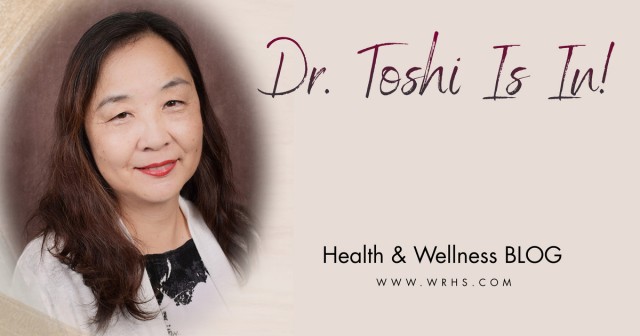Dr. Toshi Is In! "Hair Loss"
Dear Dr. Toshi,
I recently noticed that I'm losing more hair when I brush my hair. Is it normal to lose hair as we get older?
Hair loss is common. We often see classic male pattern hair loss and women with thinning hair as they get older. It's possible that it's a simple "hair loss" (though the symptoms are not so simple emotionally), but there are also many medical conditions that can cause hair loss, too.
Hair grows out of our hair follicles, which are like tiny tunnels in our scalp where many different kinds of cells work together. The bulb is the deepest part of the hair follicle, and that's where hair is made. The shape of your follicles determines whether your hair is straight or curly. When follicles are circular, the hair comes out straight. When they're oval-shaped, the hair is curlier. The color of the hair is also determined in that area, depending on the types of cells.
There are three phases of hair growth that make up the hair cycle. The period of active growth is called anagen. The period of hair follicle transformation is called catagen. And the period of resting is called telogen. In humans, each follicle goes through the hair cycle independently so we don't lose or "shed" our hair all at once! We have about 100,000 to 150,000 hair follicles on our scalp, and each one is on its own cycle! However, at any given time, 90% of them are in the anagen phase when hair is growing. On average, each hair grows about a half an inch per month. Anagen, the growth phase, lasts two to six years. It's shorter for our eyebrows, so they grow at a slower rate, as you might have guessed!
During catagen, the transformation phase, the follicle changes, and the production of hair stops. This phase lasts about three weeks. During telogen, the resting phase, the hair follicle gets ready to shed the hair and then releases the hair. This lasts about 2 to 3 months, and about 10% of the hair follicles in our scalp are in this phase. Normally, around 50 to 150 telogen hairs are shed per day by follicles in this phase.
There are basically three main categories of hair loss: disorders of hair cycling, inherited or acquired abnormalities in hair shafts, or inflammatory conditions that damage hair follicles. There are many, many underlying potential causes, so if you're noticing hair loss, it's important to talk to your provider.
Male pattern hair loss (also called androgenetic alopecia in men) is due to the effect of androgens on androgen-sensitive hair follicles in genetically susceptible males. (Androgens are sometimes called "male sex hormones," but women have them, too.) Female pattern hair loss occurs most often as hair thinning on the frontal and crown areas of the scalp. Unfortunately, this is common with aging. The first line treatment (that means the treatment that doctors usually try first) for these conditions is an over-the-counter product called minoxidil (a common brand you've probably heard of is "Rogain"). The 5% foam or solution is applied to the affected area once a day, or 2% solution is applied twice a day. A lot of people prefer 5% once a day because that regimen seems to cause less skin irritation or itchiness. Make sure that the minoxidil is applied to the scalp itself, and not to the hair. Minoxidil is massaged onto the scalp with the fingers, and the hands should be washed well afterwards. Shedding of hair commonly occurs during the first two to eight weeks after application because telogen hairs are shed as the follicles are stimulated, so don't quit using it just because of shedding. In fact, it's recommended that people try it for at least 12 months.
I only talked about just a couple kinds of hair loss today, but as I mentioned above there are many potential causes, so if you're having hair loss, please talk about it with your provider.
Dr. Toshiko ("Toshi") Luckow, MD, is a Family Physician at the West River Health Services Hospital and Clinics.
When you subscribe to the blog, we will send you an e-mail when there are new updates on the site so you wouldn't miss them.


Comments